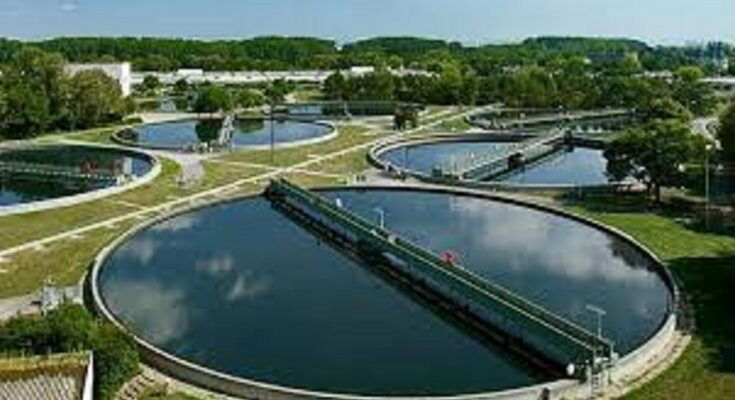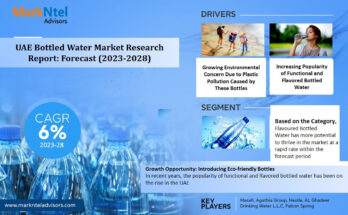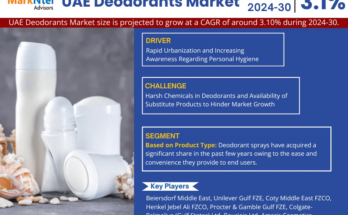The market for wastewater treatment in India is driven by rising water pollution levels and strict government restrictions.
According to TechSci Research report, “India Wastewater Treatment Market – By Region, Competition, Forecast & Opportunities, 2028”. The market for wastewater treatment plants in India is expanding quickly as a result of the country’s strict government rules and rising water contamination. Additionally, water treatment and sewage treatment facilities in the residential sector are evolving, which supports market expansion.
India’s metropolitan areas are expanding at a never- -seen- before rate because of new economic reforms and migration. 1.38 billion people (as of 2020) are quickly migrating to urban areas in quest of improved employment opportunities and quality of life. Recent estimates show that urban areas are home to 35% of the world’s population (483 million people) (United Nations, 2019). As many as 53 cities in India had a population above a million, according to the Census of 2011. By 2030, there will be 607 million people living in urban areas, and by 2050, it is predicted that 877 million people, or 50% of the total population, would live in urban areas. Urban planners are under a great deal of strain as a result of this unsustainable growth in population, particularly when it comes to providing utilities such as clean, inexpensive water. Water will eventually be taken from the common pool, where there are different sectoral needs, to supply such big cities. Sectoral demands for water are at all-time high as the needs of irrigation, home supplies, electricity, and industry continue to expand. According to forecast for India, the country would need 1,447 km3 of water by 2050, of which 74% will be used for agriculture. The remaining water will be used for drinking water (7%), industry (4%), energy (9%) and other purposes (6%). However, as Indian cities and towns experience fast urban expansion, a greater focus is placed on the need for drinking water than on fulfilling rural water demands, such as irrigation. Water is being transferred more often from rural and peri-urban areas to metropolitan centers. Numerous of these expanding towns are situated in significant river basin catchments, removing freshwater and dumping sewage back into them, contaminating irrigation water and providing significant issues for urban and rural planners, particularly with regard to urban wastewater management.
Based on application, the India wastewater treatment market is segmented into municipal and industrial. The municipal sector makes up the greatest portion of the market because of financial assistance from the government. The expense of developing physical factories is assisted by the government. The industrial sector, on the other hand, is expected to witness the greatest CAGR throughout the forecast period. The development of onsite wastewater treatment facilities by enterprises in response to environmental laws is expected to drive the market growth over the projected period.
Browse over XX market data Figures spread through XX Pages and an in-depth TOC on the “India Wastewater Treatment Market“
https://www.techsciresearch.com/sample-report.aspx?cid=14719
In terms of regional analysis, the India Wastewater Treatment Market is segmented into North India, South India, East India, & West India. With a significant CAGR during the forecast period, West India will continue to dominate the wastewater treatment industry. Due to the growing industrialization of regions such as Maharashtra and Gujarat, the Western region holds the highest market share. For instance, the industrial regions of Mumbai-Pune and Gujarat need a lot of water to sustain industrial activity owing to which industries are now using recovered wastewater. The Ahmedabad Municipal Corporation has also lately recommended that businesses purchase and utilize its treated water for industrial uses.
According to a recent study by the Central Pollution Control Board (CPCB), India’s metropolitan centers generated 72,368 megalitres per day (MLD) worth of sewage in the calendar year 2020–21. The installed capacity for treating sewage is 31,841 MLD, however, the actual capacity is only 26,869 MLD, which is substantially less than the load produced. Only 28% (20,236 MLD) of the entire amount of urban sewage generated was processed into wastewater. According to this, 72% of the wastewater is left untreated and dumped into lakes, rivers, and groundwater. There have been some proposed infrastructure upgrades, including an additional 4,827 MLD of sewage treatment capacity. There is a gap of 35,700 MLD (or 49%) between the wastewater generated and the capacity available for treatment even if this is increased to the currently established capacity (CPCB). The anticipated wastewater generation from Class I cities and Class II towns (as per the 2001 census) is 29,129 MLD, and it is projected to increase to 33,212 MLD at this time, assuming a 30% decadal increase in urban population. The existing sewage treatment capacity is just 6,190 MLD in contrast to this. Between sewage generation and existing sewage treatment capacity, there is still a 79% (22,939 MLD) shortage. There is now planned or building activity for a further 1742.6 MLD wastewater treatment capacity. There is a shortfall in sewage treatment capacity of 21,196 MLD, or 73%, even if this is added to the current capacity (CPCB). Water quality is contaminated and deteriorates as a result of untreated wastewater making its way into the area’s rivers, lakes, and groundwater aquifers. In order to monitor, the river water quality using biochemical oxygen demand (BOD) as a pollutant indicator, the CPCB has identified 351 segments on 323 rivers. According to the monitoring data, 13% of the Indian River portions are classified as Priority 1, meaning they are extremely contaminated, while 17% of the Priority 2 and Priority 3 stretches are classified as moderately or seriously polluted.
Recent Developments:
- Hubert Enviro Care Systems P Ltd (HECS) acquired a 2.5 Acre Industrial Land lot at Sipcot Vallam Industrial Estate on the outskirts of Chennai in March 2022 to establish its second plant to produce FRP Packaged Sewage Treatment Plants. For the manufacture of packaged sewage treatment plants, this facility is anticipated to rank among the biggest in India.
- On January 4, 2021, SUEZ declared that it had successfully acquired the Reverse Osmosis (RO) membrane product line as an asset from the speciality chemical firm LANXESS. With this purchase, SUEZ incorporates a new complementary RO membrane technology. These membranes will complete the division’s portfolio of water technologies and solutions and allow SUEZ to provide its clients with ever-greater assistance in the field of water treatment. With the help of this purchase, the Group will be able to strengthen its expansion in accordance with the strategic plan “Shaping SUEZ 2030” and increase both its production capacity and its product offering.
- On December 2, 2019, VA Tech Wabag Limited and the Bihar government agreed to construct a long-lasting wastewater infrastructure in Patna as part of the Namami Gange Program. A contract for INR 1,187 Crore was signed by Wabag as part of the famous Namami Gange Program.
Download Free Sample Report@
https://www.techsciresearch.com/sample-report.aspx?cid=14719
Customers can also request for 10% free customization on this report.
Key market players in the India Wastewater Treatment Market include:
- Veolia India Private Limited
- Suez Water Technologies & Solutions
- Thermax Limited
- VA Tech Wabag Ltd
- DuPont
- Toshiba Infrastructure Systems & Solutions Corporation
- Xylem Water Solutions India Pvt Ltd
- Doshion Veolia Water Solutions Pvt Ltd
- Ion Exchange India Ltd
- Larsen & Toubro Limited
‘’A Frost & Sullivan analysis from 2022 predicts that the Indian water and wastewater treatment industry would expand at a compound annual growth rate (CAGR) of 9.7% and reach USD 2.08 billion by 2025 from USD 1.31 billion in 2020. According to the research, India is the world’s sixth-largest market for environmental technology, with the second-largest market share in the water/wastewater management subsector. The Indian water and wastewater treatment industry is expanding because of several governmental efforts, including the Atal Mission for Rejuvenation and Urban Transformation, National Mission for Clean Ganga, Jal Jeevan Mission, and Community Drinking Water Schemes. Therefore, the market growth of wastewater treatment is expected to rise in the upcoming years”, said Mr. Karan Chechi, Research Director with TechSci Research, a research-based global management consulting firm.
“India Wastewater Treatment Market By Equipment (Membrane Separation, Biological, Disinfection, Sludge Treatment), By Process (Primary Treatment, Secondary Treatment, Tertiary Treatment), By Application (Municipal, Industrial [Chemical, Pharma, Food & Beverages, Oil & Gas, Metal & Mining, Others]), By Region, Competition, Forecast & Opportunities, 2028”, has evaluated the future growth potential of India Wastewater Treatment Market and provides statistics and information on market structure, size, share, and future growth. The report is intended to provide cutting-edge market intelligence and help decision-makers take sound investment decisions. Besides, the report also identifies and analyzes the emerging trends along with essential drivers, challenges, and opportunities present in the India Wastewater Treatment Market.’
https://www.techsciresearch.com/sample-report.aspx?cid=14719
Contact
Mr. Ken Mathews
708 Third Avenue,
Manhattan, NY,
New York – 10017
Tel: +1-646-360-1656
Email: [email protected]
Website: https://www.techsciresearch.com




